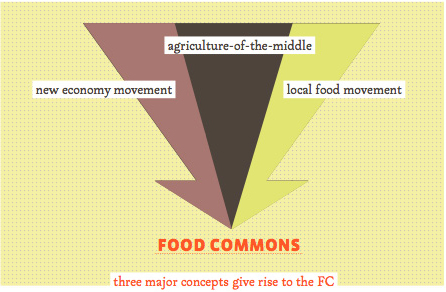 We are in a time of extraordinary opportunity. After a decade of seismic shocks to our country from global terrorism to deep recessions and major natural disasters, each of the three legs of sustainability – the environment, the economy, and social balance in our communities – is in crisis.
We are in a time of extraordinary opportunity. After a decade of seismic shocks to our country from global terrorism to deep recessions and major natural disasters, each of the three legs of sustainability – the environment, the economy, and social balance in our communities – is in crisis.
Yet through this time a movement has grown which brings great hope for a healthier, more sustainable and prosperous future. It is the movement to produce, access, secure and consume good and healthy food. People are re-awakening to the fact that food is not only the basis of our health but it is also at the basis of traditions, customs and culture that bind us together as family and community.
Currently, less than 3% of the food Americans eat is grown with 100-200 miles of where they live. While a few regions have retained or re-established some of the pieces of a thriving local food system, these scattered small enterprises collectively represent a tiny fraction of the total food economy, and serve a small but very dedicated food base. Though exciting and inspirational, they are mostly isolated, undercapitalized, and sub-scale, and as such they cannot be expected to achieve the food system changes which may be necessary to substantively improve the health, the environment and local economic opportunities.
Shifting some fraction – even just 5% or 10% – of the global food economy into localized food systems within a reasonable time frame (say, 5-10 years) will require development of a new, efficient and high performing infrastructure that enables small, independent food and farming enterprises to offer a competitive alternative to the current system. This then, is the challenge and the opportunity of the Food Commons model.
The Food Commons model sits at the nexus of three growing trends:
- Agriculture-of-the-Middle (AOTM) – A growing movement to save and expand the number of small and mid-sized family farms by creating new value chains and marketing mechanisms to bring their differentiated food products into the marketplace. Aggregating these scales of family farms reduces transaction costs.
- Local Food – Interest in the development of localized food systems has emerged out of recognition that the current global food system may present local challenges, and that localized food systems have the potential to increase food security, food access, and health, and to re-establish land stewardship and food culture. Farmers markets and CSA’s (community-supported agriculture) have been instrumental in raising local food awareness, but these two marketing mechanisms are not sufficient to establish a thriving, robust local food system.
- New Economy – The current recession has revealed some of the design flaws in our current global economic paradigm, and invigorated thinking about new, more sustainable economic models that take into account the world’s finite resources, growing population, and need for greater balance in terms of wealth and influence. Much of this new thinking centers on the rebuilding of local economies to foster economic resilience, job creation, entrepreneurship, stewardship and accountability. The food production, distribution and retail/food service sectors are particularly ripe for local experimentation and economic renaissance.
